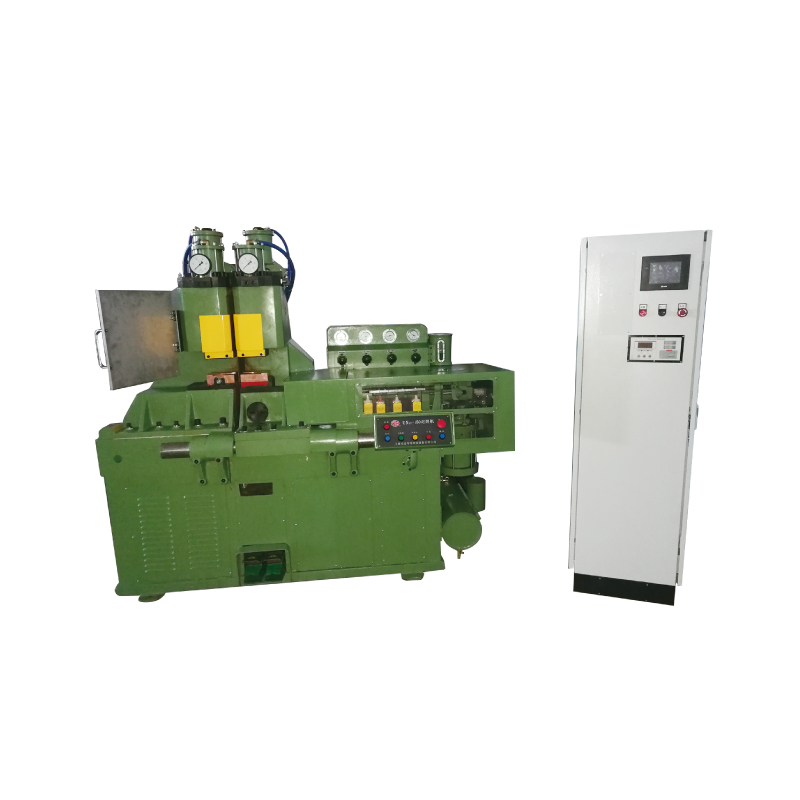
Flash Butt Welding Machine
(Total 4 Products)-
Min. Order:1High-end AC flash butt welding machine: Defining new heights of welding with outstanding performance In the high-end field of Welding equipment, the Premium AC Flash Butt Welding Machine, with its top-notch AC technology and precise flash control,...
-
Min. Order:1Heavy-duty flash butt welding machine: The hardcore player in the field of heavy-duty welding On the welding battlefield of Heavy industry, Heavy-Duty Flash Butt Welder, with its strong load-bearing capacity and stable high current output, has...
-
Min. Order:1Rim flash butt welding machine: Infusing precision and reliability into rim welding In the manufacturing process of automotive rims, the Rim Flash Butt Welding Machine, with its exclusive design for the rim structure, has become a key device to...
-
Min. Order:1Water-cooled flash butt welding machine: Setting a new benchmark for welding with efficient heat dissipation In the high-temperature Welding operation site, the water-Cooled Flash Butt Welding Machine, with its unique water-cooling heat dissipation...
A Flash Butt Welding Machine is a specialized resistance welding device designed to join metal workpieces end-to-end through a controlled flashing and upsetting process. It is widely recognized for its efficiency and reliability in industrial manufacturing, playing a vital role in sectors like automotive, construction, and metal processing.
Working Principle
The machine operates through two key stages: flashing and upsetting. During the flashing stage, workpieces are brought into intermittent contact, creating electric arcs (flashes) that generate intense heat, melting the contact surfaces. In the upsetting stage, high pressure is applied to forge the molten surfaces together, forming a strong metallurgical bond. This process eliminates the need for additional fillers, ensuring pure weld quality.
Structure and Components
It consists of a welding transformer, clamping mechanisms, a sliding table, a pressure system, a control panel, and a cooling unit. The transformer supplies high-current low-voltage electricity for welding. Clamping mechanisms securely hold workpieces in alignment. The sliding table adjusts workpiece positioning, while the pressure system delivers precise upsetting force. The control panel regulates parameters like current intensity, flashing time, and upset pressure. The cooling unit prevents overheating during prolonged operation.
Advantages
Firstly, it produces high-strength welds with mechanical properties comparable to the base metal. Secondly, the automated process ensures consistent weld quality, reducing human error. Thirdly, it offers high production efficiency with rapid cycle times, suitable for mass production. Fourthly, it minimizes material waste as no extra consumables are needed. Additionally, it can weld various metals including carbon steel, stainless steel, aluminum, and copper alloys.
Applications
In the automotive industry, it welds axle components, drive shafts, and frame parts. In construction, it joins reinforcing bars and steel structural elements. It is also used in manufacturing steel pipes, railway rails, and metal profiles. For wire mesh production, it efficiently connects mesh panels into larger sheets.
Development Trend
Modern flash butt welding machines are integrating intelligent technologies. Advanced models feature touch-screen controls, programmable welding sequences, and real-time monitoring systems. Some are equipped with sensors to detect workpiece alignment and automatically adjust parameters, improving accuracy. Energy-saving designs and eco-friendly cooling systems are also becoming standard, aligning with sustainable manufacturing goals.

Flash Butt Welding Machine
Flash butt welding machine is an advanced welding equipment that melts the metal end face through resistance heat and achieves molecular-level bonding under top forging pressure. This equipment adopts PLC intelligent control and is suitable for end face butt welding of high-strength components such as rails, pipes and profiles. The strength of the welded joint can reach over 95% of the base material. It is widely used in the fields of rail transit, oil pipelines and building steel structures.




